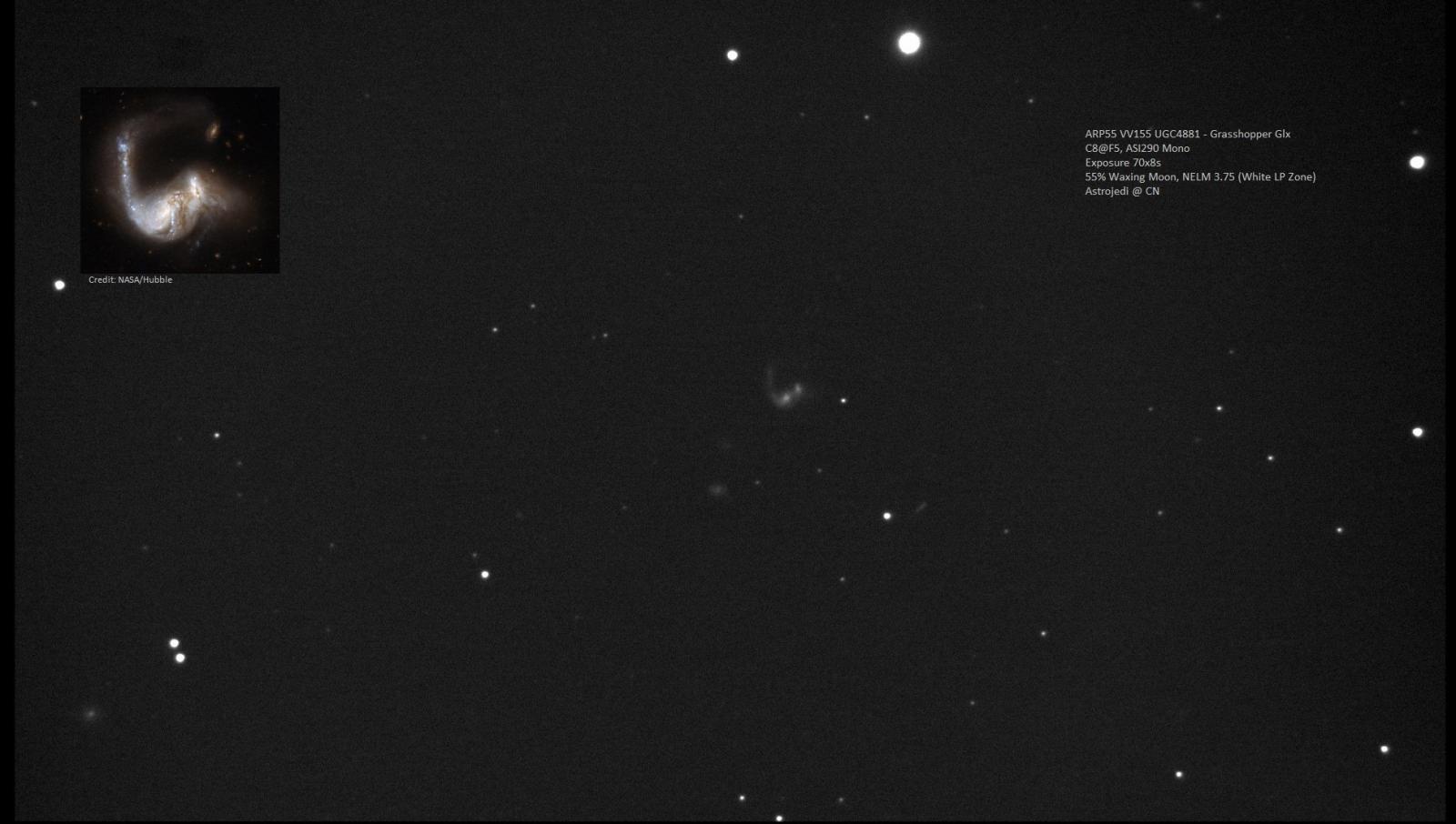Colliding Galaxies and Cosmic Train wrecks
This article was inspired by the May 2017 Sky & Telescope column by Steve Gottlieb. The article was in that issue's "Observing section" and was classified as a big scope challenge. Steve includes his visual observing notes through a 48" F/4 scope (!) from the dark skies of West Texas. A must read article.
The article covers some of the most interesting and challenging interacting galaxies. Now this is the kind of stuff that gets me excited. I still love visual observing and go to dark skies now and then and would love to visually explore all of these objects but I don't have a 48" scope and likely never will. While some the bright ones are accesible with smaller scopes, few will show any detail. Here is where EAA comes to the rescue. I wanted to see what I could see with very modest equipment from the LP muck that I live in.
This article includes many of the galaxies from the S&T article as well as some of my additions.
Setup used: 8" SCT @ F5, ASI290MM Mono camera on an AVX mount
Total Exposure time: Given the incredible sensitivity of the 290 typically 10 - 20 stacks of 8s exposures - see annotation on image for exact exposure time
NELM: From my red/white LP zone backyard - typical NELM 3.75
Seeing: Typically 6-7 on the Pickering scale
The Penguin and Egg
First up is The Penguin and Egg. The pair resides in Hydra and is about 300 Mly distant. This is the violent merger of NGC2936 (one that looks like the Penguin) and 2937 (the Egg). Galaxy interactions usually cause a burst of star formation in the members. If you look at the Hubble inset you can see large blue regions where new stars are being formed. Click on the image to view full size.

The Antennae - ARP244
The Antennae ARP244 in Corvus, about 250 Mly distant. This the brighter / larger of the bunch. A beautiful galaxy interaction with a burst of star creation.
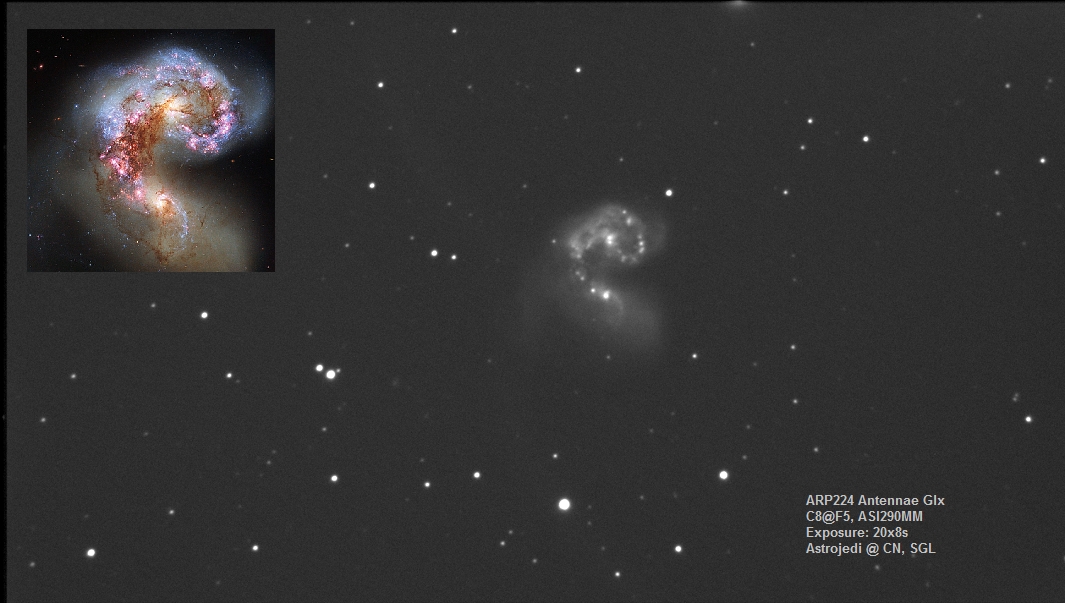
The Mice Galaxies - ARP242
ARP242 The Mice Galaxies. These are relatively small and to tease out any detail with live stacking you need good seeing and transparency. This is a stack of 160x4s with the ASI290MM at full resolution i.e. x1 bin. The image has been cropped to focus on the object.
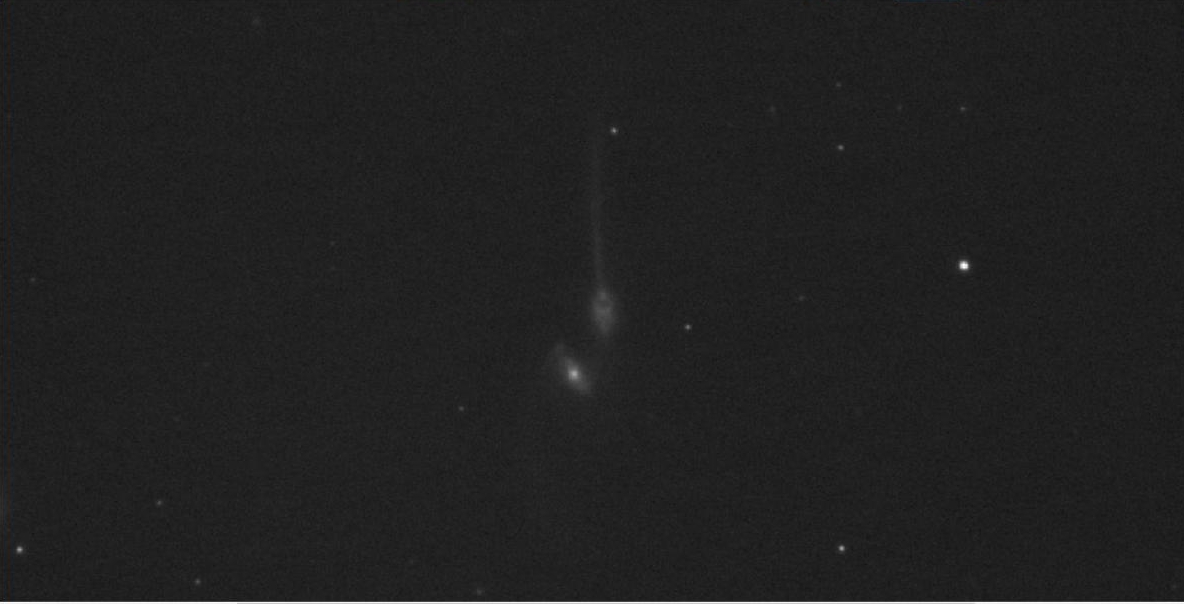
ARP284
Here is ARP284 / NGC 7714 / VV51
This is a tough one visually (like most ARPs). I can just detect it in my 14" but cannot make out much detail. I have marked a quasar from which light has been traveling for about 10 billion years. Could not find definite mag information on it but looks to be between 17-18 V mag based on a quick photometric analysis (without proper calibration hence the error range).
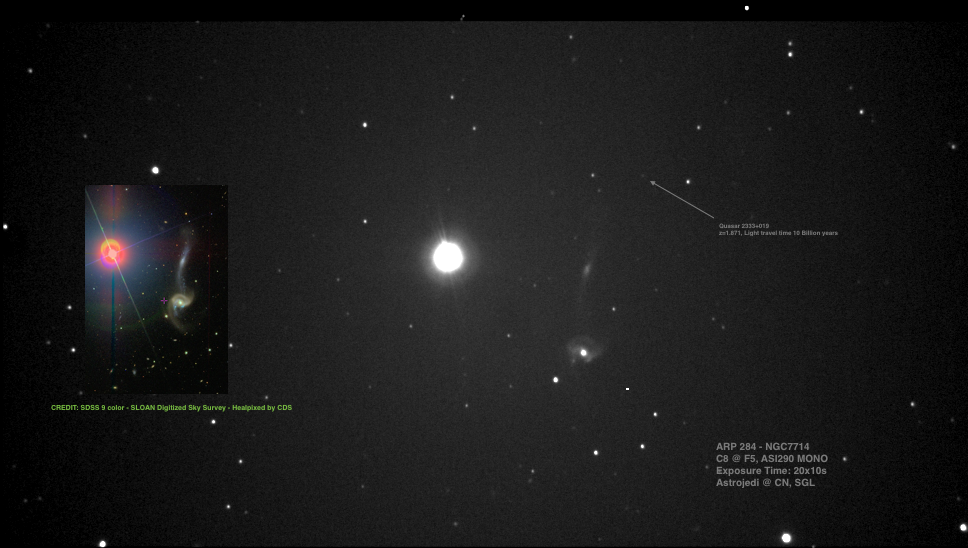
The Taffy galaxy system
The Taffy galaxy system UGC12914/15 is a rare spectacular head-on collision between two gas-rich spiral galaxies. One of my favorite objects. In my opinion this object would have been a great addition to the S&T article.
I was not able to capture the bridge of gas between the two systems as it is too faint for my light polluted location using EAA but you can just see it in the SDSS9 inset.

The Heron Galaxy - ARP84
Here is another one from the S&T article. The Heron galaxy (ARP84). Big fish eats the little fish... applies at all scales in this universe.

Edward's Galaxy - ARP81
Here is my observation of ARP81 also known as Edward's Galaxy. About 280M ly distant it is a relatively faint object and requires longer total exposure to being out more detail. I unfortunately could only manage 25 x 8s exposure before the clouds moved in.
You can see the very active star formation going on in the interacting arms where the galaxies are merging.
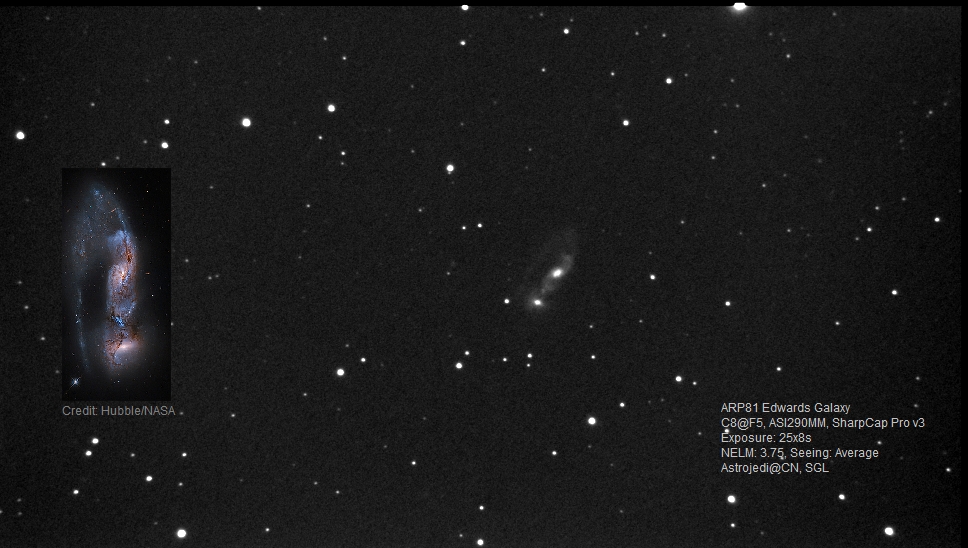
VV621 NGC6926
Here is another cosmic train wreck about 300 Mly away in Aquila. I could not find much information on this one but the distortion from a potential interaction is quite clear. Also as expected the gravitational interaction seems to be causing significant new star formation.
This galaxy is one which has really received a "black eye" from the collision - see zoomed in view inset in the image.
Seeing was not great but still captured some good detail. I could not find a Hubble or SDSS DR13 image for reference and the SDSS DR9 image did not have much more detail than my capture.
NGC1961 - ARP184
Last night managed to capture another galaxy which has been distorted by interactions with other galaxies.
The ARP atlas describes the galaxy as one with long narrow filaments. These are towards the NE quadrant of the galaxy but I was not able to capture them. They require dark skies and longer exposures.
There are 2 insets. First is an inverted image of the capture. The second is the SDSS image as a reference.
NGC3077 (Part of the M81 Group)
NGC3077 is more of an interaction than a collision... at least not yet... This is using just 4s sub exposures with the ASI290MM Total - 50x4s
NGC3077 is a small galaxy in UMA and is a member of the M81 group. It is ~13Mly distant. What makes this galaxy interesting is that while it is classified as an elliptical it shows some features like scattered dust clouds as well as what seems like star formation. This is likely due to gravitational interaction with the larger neighbours. It also has an active neucleus - I guess some galaxies don't like middle age.
It is a small galaxy and I was pleasantly surprised that I managed to capture some features. I have included 2 insets - one is a zoomed in view of the galaxy and the other is a Hubble image which shows the chaos at the heart of the galaxy quite well.
Siamese Twins
To Do
The Grasshopper Galaxies
Ok... here is the last one from the original S&T article - The Grasshopper Galaxies. It is the toughest object on the list as it is hard to pull out detail given its magnitude and small size. Needs good seeing and clear skies.
Unfortunately conditions were less than optimal to observe such small faint objects - with a 55% waxing Moon, red/white LP zone and not great seeing or transparency - all impacting SNR significantly...
You can still see the various star forming regions in the "tail" created due to the gravitational interaction.
